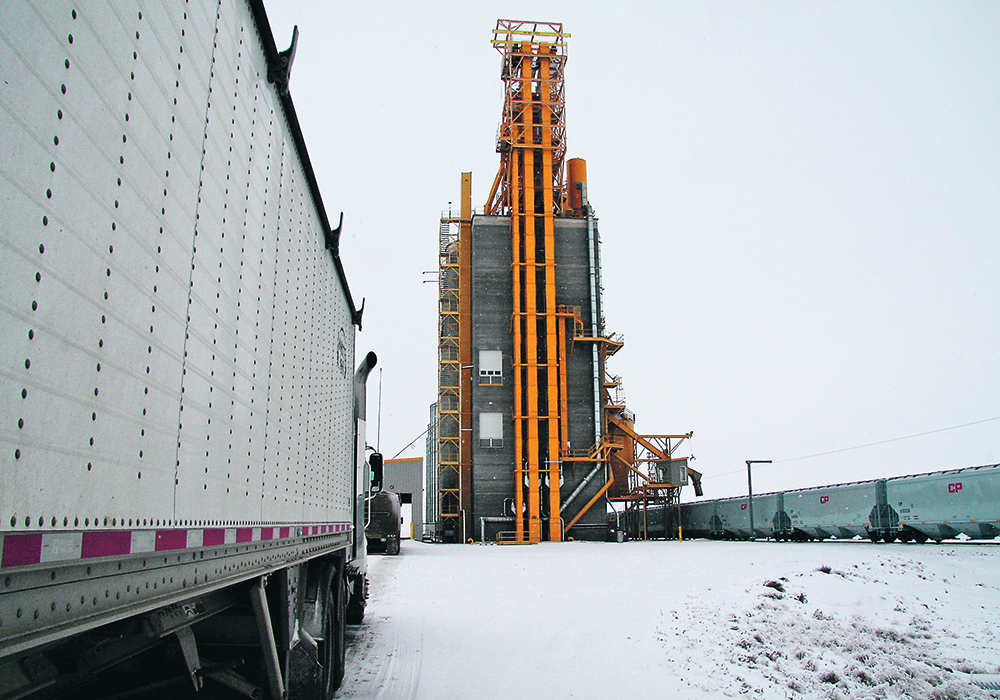Groups call railways’ plans inadequate; ‘the only thing worse than no information is bad information’
Canadian grain groups say the annual grain plans filed by the two national railways are woefully inadequate.
The plans are full of general background information and some high-level discussion about topics like capital investment strategies but contain little useful detail on plans for moving grain and setting quantifiable service and performance targets.
“There is nothing that requires the railways to put out specific numbers and holds them accountable to meeting those numbers,” said Wade Sobkowich, executive director of the Western Grain Elevator Association.
“That makes it very difficult when you’re putting on sales programs.”
Read Also

University of Saskatchewan experts helping ‘herders’ in Mongolia
The Canadian government and the University of Saskatchewan are part of a $10 million project trying to help Mongolian farmers modernize their practices.
For instance, CN’s 2022-23 grain plan details how many hopper cars the company would need to provide on a weekly basis if it were to operate at the maximum capacity of moving 36 million tonnes of grain per year.
But the company only plans to move 24.5 to 27 million tonnes in the upcoming crop year, so that information is largely useless.
“The only thing worse than no information is bad information,” said Sobkowich.
He said much of the plan warned the grain industry that it should brace for service problems in the coming year and that those problems will be the result of external factors.
In CP’s 26-page plan for 2021-22, one page was devoted to the discussion of rail capacity. The same goes for CN’s 35-page plan.
Twelve grain industry groups think it is time to revamp the annual grain plans. They have prepared a 21-page template for improving the documents, which have been filed since 2018 in accordance with Bill C-49, the Transportation Modernization Act.
“Four years into this process it is evident that the legislation has yielded neither the intended nor the desired results,” said the grain groups.
David Przednowek, assistant vice-president of grain at CN, is not intimately familiar with all the grain industry criticisms of the annual reports.
“I haven’t had a chance to read at length the details of their document,” he said.
But he noted that the railway put a considerable amount of effort into developing the plans. The 2022-23 plan is the culmination of many months of work.
He said there are a lot of external factors that make it difficult to provide the type of detailed weekly forecasts that the grain companies are seeking.
“We most certainly saw that last year,” said Przednowek.
Extreme flooding knocked out the company’s main line to the Port of Vancouver for three weeks, which had a “material impact” on grain movement.
The grain companies contend that the railways have turned the “overly broad language” in the legislation to their advantage. They are meeting the requirements of the act without meeting its intended objectives.
“History tells us that CN and CP will not willingly provide any meaningful transparency into their operations nor put forth any basis to allow stakeholders to hold them accountable for their performance,” the template states.
“While they publicly tout themselves as engines of economic growth, they concurrently keep their hand firmly on the throttle that governs that growth, permitting it to occur at the pace most beneficial to their corporate interests.”
The groups say the railways will continue to omit meaningful service and performance information unless directed to reveal it by the Minister of Transport.
“A monopolist’s worst enemy is transparency and the railways will not yield that leverage willingly,” said the grain groups.
Greg Northey, vice-president of corporate affairs with Pulse Canada, said Transport Canada tried to take a balanced approach and split the difference on some of the key contentious issues in Bill C-49 and the result is ineffectual legislation.
He thinks the grain plan issue will eventually require a “legislative fix” at some point down the road.
Improving the annual railway grain plans is the priority in a four-point plan developed by the grain industry to keep Canadian grain moving to overseas markets in the years ahead.
The plan is called Canada’s Ready.
The second point of the plan is to form an industry-government labour council to track the progress of collective agreement negotiations. There are 12 CN and CP labour agreements that are expired or will expire in 2022 alone.
The third point is for CN and CP and the container lines to provide monthly updates on their annual plans based on the latest economic forecasts.
Lastly, the groups would like the government to support the increased use of comprehensive performance measurement programs, such as the Ag Transport Coalition for rail, which tracks railway performance.
The grain industry would also like to see container lines provide a clear indication of the expected monthly capacity of their export programs.
The United States recently passed the Ocean Shipping Reform Act requiring them to do just that.
“We obviously have no such thing here,” said Northey.
















